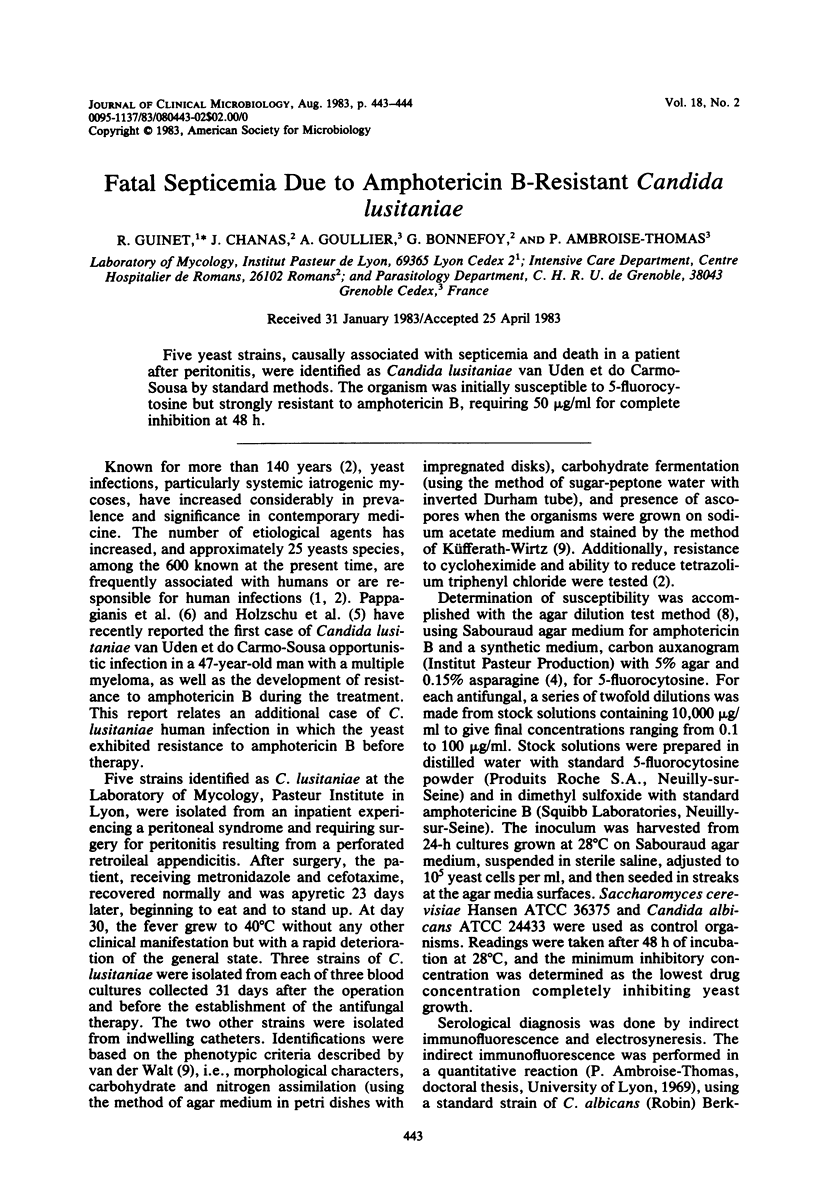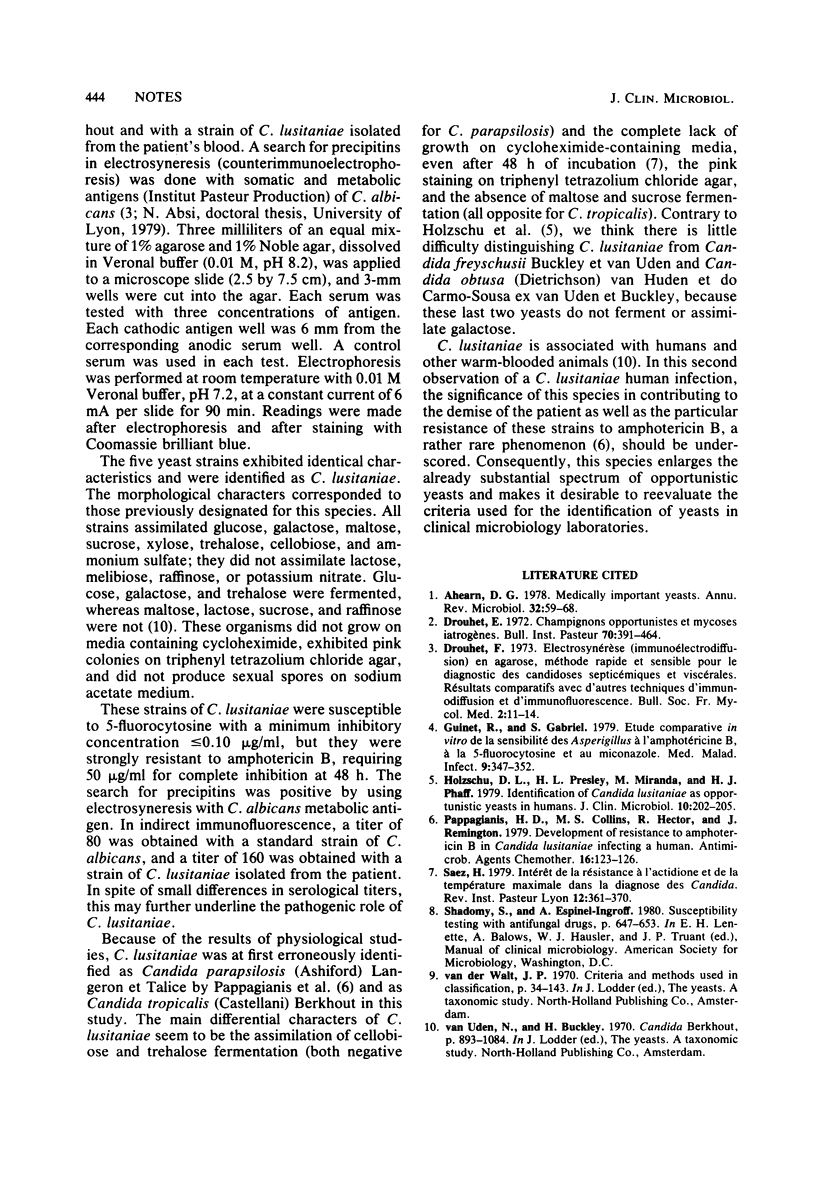Abstract
Five yeast strains, causally associated with septicemia and death in a patient after peritonitis, were identified as Candida lusitaniae van Uden et do Carmo-Sousa by standard methods. The organism was initially susceptible to 5-fluorocytosine but strongly resistant to amphotericin B, requiring 50 micrograms/ml for complete inhibition at 48 h.
Full text
PDF

Selected References
These references are in PubMed. This may not be the complete list of references from this article.
- Ahearn D. G. Medically important yeasts. Annu Rev Microbiol. 1978;32:59–68. doi: 10.1146/annurev.mi.32.100178.000423. [DOI] [PubMed] [Google Scholar]
- Holzschu D. L., Presley H. L., Miranda M., Phaff H. J. Identification of Candida lusitaniae as an opportunistic yeast in humans. J Clin Microbiol. 1979 Aug;10(2):202–205. doi: 10.1128/jcm.10.2.202-205.1979. [DOI] [PMC free article] [PubMed] [Google Scholar]
- Pappagianis D., Collins M. S., Hector R., Remington J. Development of resistance to amphotericin B in Candida lusitaniae infecting a human. Antimicrob Agents Chemother. 1979 Aug;16(2):123–126. doi: 10.1128/aac.16.2.123. [DOI] [PMC free article] [PubMed] [Google Scholar]


